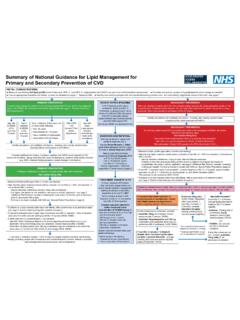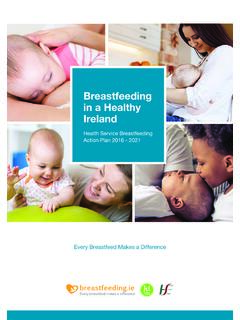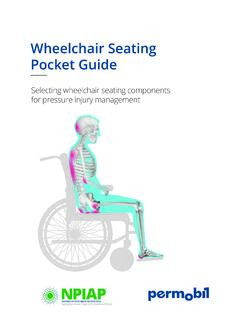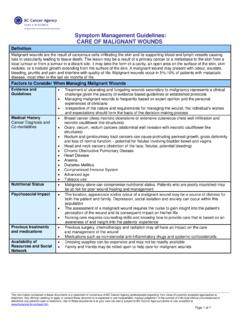Transcription of GLOBAL HEALTH RISKS - WHO
1 GLOBAL HEALTH RISKS . Mortality and burden of disease attributable to selected major RISKS GLOBAL HEALTH RISKS . Mortality and burden of disease attributable to selected major RISKS World HEALTH Organization WHO Library Cataloguing-in-Publication Data GLOBAL HEALTH RISKS : mortality and burden of disease attributable to selected major RISKS . 1. Risk factors . 2. World HEALTH . 3. Epidemiology. 4. Risk assessment. 5. Mortality - trends. 6. Morbidity - trends. 7. Data analysis, Statistical. I. World HEALTH Organization. ISBN 978 92 4 156387 1. (NLM classification: WA 105).
2 World HEALTH Organization 2009. All rights reserved. Publications of the World HEALTH Organization can be obtained from WHO Press, World HEALTH Organization, 20 Avenue Appia, 1211 Geneva 27, Switzerland (tel.: +41 22 791 3264; fax: +41 22 791 4857; e-mail: Requests for permission to reproduce or translate WHO. publications - whether for sale or for noncommercial distribution - should be addressed to WHO Press, at the above address (fax: +41 22 791 4806; e-mail: The designations employed and the presentation of the material in this publication do not imply the expression of any opinion whatsoever on the part of the World HEALTH Organization concerning the legal status of any country, territory, city or area or of its authorities, or concerning the delimitation of its fron- tiers or boundaries.))
3 Dotted lines on maps represent approximate border lines for which there may not yet be full agreement. The mention of specific companies or of certain manufacturers' products does not imply that they are endorsed or recommended by the World HEALTH Organization in preference to others of a similar nature that are not mentioned. Errors and omissions excepted, the names of proprietary products are distin- guished by initial capital letters. All reasonable precautions have been taken by the World HEALTH Organization to verify the information contained in this publication.
4 However, the published material is being distributed without warranty of any kind, either expressed or implied. The responsibility for the interpretation and use of the material lies with the reader. In no event shall the World HEALTH Organization be liable for damages arising from its use. Printed in France. Acknowledgements This publication was produced by the Department of HEALTH Statistics and Informatics in the Information, Evidence and Research Cluster of the World HEALTH Organization (WHO). The analyses were primarily carried out by Colin Mathers, Gretchen Stevens and Maya Mascarenhas, in collaboration with other WHO.
5 Staff, WHO technical programmes and the Joint United Nations Programme on HIV/AIDS (UNAIDS). The report was written by Colin Mathers, Gretchen Stevens and Maya Mascarenhas. We wish to particularly thank Majid Ezzati, Goodarz Danaei, Stephen Vander Hoorn, Steve Begg and Theo Vos for valuable advice and information relating to other international and national comparative risk assessment studies. Valuable inputs were provided by WHO staff from many departments and by experts outside WHO. Although it is not possible to name all those who contributed to this effort, we would like to particularly note the assistance and inputs provided by Bob Black, Ties Boerma, Sophie Bonjour, Fiona Bull, Diarmid Campbell-Lendrum, Mercedes de Onis, Regina Guthold, Mie Inoue, Doris Ma Fat, Annette Pr ss-Ust n, J rgen Rehm, George Schmid and Petra Schuster.
6 Figures were prepared by Florence Rusciano, and design and layout were by Reto Sch rch. ii GLOBAL HEALTH RISKS . Contents iv iv v vi 1 Introduction 1. Purpose of this 1. Understanding the nature of HEALTH 1. The risk 2. Measuring impact of 4. Risk factors in the update for 5. Regional estimates for 7. 2 Results 9. GLOBAL patterns of HEALTH 9. Childhood and maternal 13. Other diet-related risk factors and physical 16. Sexual and reproductive 19. Addictive 21. Environmental 23. Occupational and other 25. 3 Joint effects of risk factors 28. Joint contribution of risk factors to specific 28.
7 Potential HEALTH gains from reducing multiple risk 29. 31. Annex A: Data and methods 32. Estimating population attributable 32. Risk 33. Table A1: Definitions, theoretical minima, disease outcomes and data sources for the selected GLOBAL risk 41. Table A2: Summary prevalence of selected risk factors by income group in WHO regions, 46. Table A3: Attributable mortality by risk factor and income group in WHO regions, estimates for 50. Table A4: Attributable DALYs by risk factor and income group in WHO regions, estimates for 52. Table A5: Countries grouped by WHO region and income per capita in 54.
8 References 55. iii World HEALTH Organization Tables Table 1: Ranking of selected risk factors : 10 leading risk factor causes of death by income group, 11. Table 2: Ranking of selected risk factors : 10 leading risk factor causes of DALYs by income group, 12. Table 3: Deaths and DALYs attributable to six risk factors . for child and maternal undernutrition, and to six RISKS combined; countries grouped by income, 14. Table 4: Deaths and DALYs attributable to six diet-related RISKS and physical inactivity, and to all six RISKS combined, by region, 17. Table 5: Deaths and DALYs attributable to alcohol, tobacco and illicit drug use, and to all three.
9 RISKS together, by region, 22. Table 6: Deaths and DALYs attributable to five environmental RISKS , and to all five RISKS combined by region, 24. Table 7: Percentage of total disease burden due to 5 and 10 leading RISKS and all 24 RISKS in this report, world, 2004 .. 30. Table 8: Percentage of total disease burden due to 10 leading RISKS , by region and income group, 2004 .. 30. Table A1: Definitions, theoretical minima, disease outcomes and data sources for the selected GLOBAL risk 41. Table A2: Summary prevalence of selected risk factors by income group in WHO regions, 46.
10 Table A3: Attributable mortality by risk factor and income group in WHO regions, estimates for 50. Table A4: Attributable DALYs by risk factor and income group in WHO regions, estimates for 52. Table A5: Countries grouped by WHO region and income per capita in 54. Figures Figure 1: The causal 2. Figure 2: The risk 3. Figure 3: An observed population distribution of average systolic blood pressure . and the ideal population distribution of average systolic blood 4. Figure 4: Counterfactual 6. Figure 5: Low- and middle-income countries grouped by WHO region, 7.
















